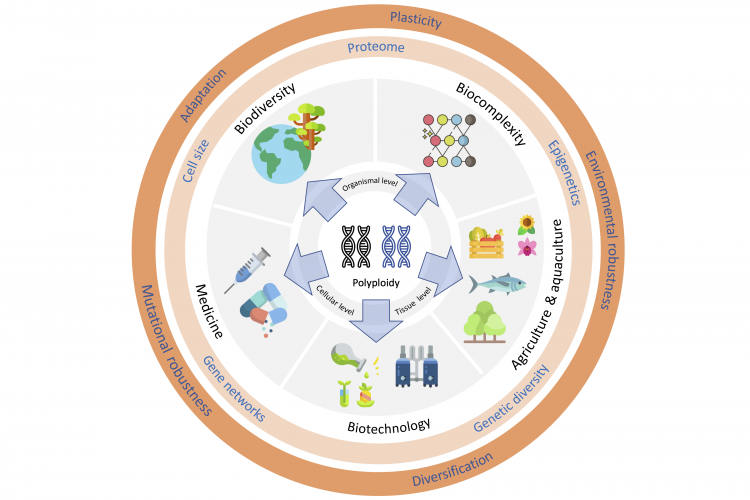Whole Genome Duplication & Polyploidy
Thousands of species are currently polyploid, possessing more than two complete sets of chromosomes. However, the long-term establishment of organisms that have undergone ancient whole genome duplications (WGDs) has been exceedingly rare and when we analyse the genomes of plants and animals, we can, at most, find evidence for a very limited number of WGDs that survived on the longer term. The paucity of (established) ancient genome duplications and the existence of so many species that are currently polyploid provides a fascinating paradox. There is growing evidence that the majority of ancient WGDs were established at specific times in evolution, for instance during periods of environmental change and periods of mass-extinction. The reason for this ‘stress’-polyploidy relationship has been the subject of considerable speculation and several hypotheses have been put forward to explain this observation: (a) stressful conditions promote polyploid formation; (b) polyploidisation causes a niche shift allowing polyploids to grow in conditions that are unsuitable for their non-polyploid ancestors; and (c) polyploids have an increased evolvability and consequently adapt faster to a changing environment.
In the Van de Peer lab, we attempt to unravel the mechanistic underpinnings of why and how polyploids can outcompete non-polyploids. This is done using a wholistic approach, using comparative genomics, experimental evolution and modelling approaches.
COMPARATIVE GENOMICS
We are examining both ancient and recent polyploid genomes, while also developing advanced computational tools to deduce ancient whole-genome duplications (WGDs) and explore the effects of polyploidy.
EXPERIMENTAL EVOLUTION
We are replaying the ‘genome duplication tape of life’ in two different model systems, namely Chlamydomonas and Spirodela (duckweed). Hereby, we run (long-term) evolutionary experiments, allowing us to directly compare polyploids with their diploid progenitors. See Experimental Evolution
MODELING APPROACHES
We complement our in-vivo evolutionary experiments with in-silico experiments based on so-called digital organisms (DOs) running on artificial genomes. Complementary modelling approaches are also employed to study the effects of polyploidy from an eco-evolutionary dynamics perspective. See Artificial Evolution
By integrating our results obtained from in-vivo and in-silico experiments, we hope to obtain important novel insights in the adaptive potential of polyploids under stressful conditions or during times of environmental and/or climate change.

